Phellodendron chinense
[Medicinal Use] This product is the bark of the plant Huangqi or Huangpi of the family Rutaceae without the outer skin.
[Nature and flavor and meridians] Bitter, cold. Enters the kidney, bladder, and large intestine meridians.
[Effects] Clears heat and dries dampness, purges fire and detoxifies, and clears heat from deficiency.
[Clinical Application] 1. Used for damp-heat diarrhea, damp-heat jaundice, as well as drizzling and painful urination, red and white vaginal discharge, swelling and pain in the genitals, swelling and pain in the feet and knees, and weakness.
The ability of Phellodendron chinense to clear heat and dry dampness is similar to that of Scutellaria baicalensis and Coptis chinensis, but it is better at removing damp heat in the lower part of the body. For diarrhea, it is combined with Scutellaria baicalensis and Coptis chinensis; for jaundice, it is combined with Gardenia jasminoides and Artemisia capillaris; if combined with Atractylodes macrocephala and Achyranthes bidentata, it can be used for swelling and pain in the feet and knees, weakness in the lower limbs; combined with Anemarrhena asphodeloides, Radix Rehmanniae, Bamboo Leaf, and Akebia, it can be used for drizzling and painful urination; combined with Angelica dahurica and Gentiana scabra, it can be used for vaginal swelling and weakness.
2. Used for heat toxic sores, eczema, etc.
Huangbai has good effects in drying dampness, purging fire and detoxifying. It is used to treat damp-heat sores and eczema. It can be taken orally or applied externally. It can be taken internally with drugs such as Huangqin and Gardenia, and applied externally with powdered rhubarb and talcum powder.
3. It is used for fever due to yin deficiency, or nocturnal emission and spermatorrhea.
In addition to clearing real heat, Huangbai can also clear virtual heat to treat hot flashes and bone steaming, and purge kidney fire to treat nocturnal emission and spermatorrhea. It is often used together with Zhimu and Rehmannia.
[Prescription name] Chuanbai, Chuanhuangbai (raw use, purge real fire), salt water fried Huangbai (salt water fried, clear virtual heat, purge kidney fire)
[General dosage and usage] One to three qian, decocted and taken. Appropriate amount for external use.
[Comment] Huangbai, Huangqin and Huanglian are all bitter and cold medicines, which can clear heat, dry dampness, purge fire and detoxify. But Phellodendron chinense can purge kidney fire and reduce deficiency heat, and can remove damp heat in the lower part of the body; Scutellaria baicalensis is good at clearing lung heat and can calm the fetus; Coptis chinensis can purge heart fire and eliminate restlessness, and is good at stopping vomiting. This is the difference between the three medicines. Therefore, the general saying that Scutellaria baicalensis treats the upper part of the body, Coptis chinensis treats the middle part of the body, and Phellodendron chinense treats the lower part of the body is based on the characteristics of Scutellaria baicalensis clearing lung fire, Coptis chinensis stopping vomiting, and Phellodendron chinense purging kidney fire. However, now in clinical use as heat-clearing and detoxifying drugs, Scutellaria baicalensis, Coptis chinensis, and Phellodendron chinense are all universal, without such strict distinction as mentioned above.
[Example of prescription] Gardenia and cypress bark soup “Treatise on Febrile Diseases”: Phellodendron chinense, Gardenia jasminoides, Licorice. Treats yellow body and fever caused by typhoid fever.
Yihuangsan “Fu Qingzhu’s Gynecology”: Phellodendron chinense, Chinese yam, Plantago seed, Euryale ferox, Ginkgo biloba. Treats damp heat in the lower part of the body and leucorrhea.
Zishen Pill “Lanshi Secret Collection”: Phellodendron chinense, Anemarrhena asphodeloides, Cinnamon bark. Treats evil heat in the lower jiao, constipation without thirst.
The dried bark of Schneid. It is commonly known as “Sichuan Huangbai”. After peeling the bark, remove the rough bark and dry it. This product is the common fragrant plant yellow bark tree Phelodendron chinense
[Properties]
This product is plate-like or shallowly grooved, with different lengths and widths, and a thickness of 1~6mm. The outer surface is yellow-brown or yellow-brown, flat or with longitudinal grooves, and some can see lenticel marks and residual gray-brown rough bark; the inner surface is dark yellow or light brown, with fine and dense longitudinal ridges. The body is light, hard, and the cross section is fibrous, with slit-like layers and dark yellow. The smell is slight, the taste is extremely bitter, and it is sticky.
[Pengenalan]
The powder of this product is bright yellow. The fiber is bright yellow, with a diameter of 16~38um, often in bundles, and the surrounding cells contain calcium oxalate prisms to form crystal fibers; the cell wall containing crystals is lignified and thickened. The stone cells are bright yellow, round (1) or spindle-shaped, with a diameter of 35~128um. Some are branched, with sharp branches, thick walls, and obvious stratification. Some can be seen as large fibrous stone cells, up to 900um long. There are many prismatic crystals of calcium oxalate.
(2) Take 0.2g of this product powder, add 40ml of 1% acetic acid methanol solution, ultrasonically treat at 60℃ for 20 minutes, filter, and concentrate the filtrate to 2m| as the test solution. Take 0.1g of Phellodendron chinense reference medicinal material, add 20ml of 1% acetic acid methanol, and prepare the reference medicinal material solution in the same way. Take the hydrochloric acid Phellodendron chinense reference substance, add methanol to prepare a solution containing 0.5mg per 1ml, as the reference substance solution. According to the thin layer chromatography method (General Rule 0502), 3~5μ1 of each of the above three solutions are taken and spotted on the same silica gel G thin layer plate, and the lower layer solution of chloroform-methanol-water (30:15:4) is used as the developing agent. It is placed in a developing cylinder saturated with ammonia vapor, developed, taken out, dried, and sprayed with dilute potassium bismuth iodide test solution. In the chromatogram of the test sample, spots of the same color appear at the corresponding positions of the chromatogram of the reference medicinal material and the chromatogram of the reference sample.
[Pemeriksaan]
The water content shall not exceed 12.0% (General Rule 0832 Method 2).
Total ash content shall not exceed 8.0% (General Rule 2302).
[Ekstrak]
According to the cold leaching method under the determination method of alcohol-soluble extract (General Rule 2201), dilute ethanol is used as the solvent, and the content shall not be less than 14.0%.
【Kajian Kandungan】
Berberine was determined by high performance liquid chromatography (General Rule 0512).
Chromatographic conditions and system suitability test: Octadecylsilane bonded silica gel was used as filler; acetonitrile-0.1% phosphoric acid solution (50:50) (0.1g sodium dodecyl sulfonate was added per 100ml) was used as mobile phase: the detection wavelength was 265nm. The number of theoretical plates calculated based on the berberine hydrochloride peak should not be less than 4000
Preparation of reference solution: Take an appropriate amount of berberine hydrochloride reference, accurately weigh it, add mobile phase to make a solution containing 0.1mg per 1ml, and obtain it. Preparation of test solution: Take about 0.1g of the powder of this product (passed through a No. 3 sieve), accurately weigh it, put it in a 100ml volumetric flask, add 80ml of mobile phase, ultrasonically treat (power 250W, frequency 40KHz) for 40 minutes, cool it, dilute it to the scale with mobile phase, shake it well, filter it, and take the filtrate to obtain it.
Determination method Accurately aspirate 5 ml of reference solution and 5~20 u of test solution, inject into liquid chromatograph, and determine.
This product is calculated as dry product, and the berberine content is calculated as berberine hydrochloride (C20H17NO4·HCI), which shall not be less than 3.0%.
Phellodendron chinense Determine according to high performance liquid chromatography (General Rule 0512).
Chromatographic conditions and system suitability test Octadecylsilane bonded silica gel is used as filler; acetonitrile-0.1% phosphoric acid solution (0.2 g of sodium dodecyl sulfonate is added per 100 ml) (36:64) is used as mobile phase; the detection wavelength is 284 nm. The theoretical plate number calculated according to the peak of phellodendron chinense hydrochloride should not be less than 6000.
Preparation of reference solution Take an appropriate amount of phellodendron chinense hydrochloride reference substance, accurately weigh it, and add mobile phase to make a solution containing 0.1 mg per 1 ml, and obtain it. Preparation of test solution Take about 0.5g of the powder (passed through No. 4 sieve), weigh accurately, place in a stoppered conical flask, accurately add 25ml of mobile phase, weigh, ultrasonically treat (power 250W, frequency 40kHz) for 30 minutes, cool, weigh again, make up the lost weight with mobile phase, shake well, filter, and take the filtrate.
Determination method: accurately aspirate 5u of reference solution and test solution respectively, inject into liquid chromatograph, and determine.
This product contains phellodendron alkaloids calculated as phellodendron alkaloids hydrochloride (C20H23NO4·HCI) based on dry product, which shall not be less than 0.34%.
Kepingan rebusan
[Memproses]
Remove impurities from phellodendron alkaloids, spray with water, moisten thoroughly, cut into strips, and dry.
[Properties]
This product is in the form of silk strips. The outer surface is yellow-brown or yellow-brown. The inner surface is dark yellow or light brown with longitudinal ridges. The cut surface is fibrous, with sliver-like layers and dark yellow in color. It tastes extremely bitter.
[Inspection] [Content determination] [Identification]
Sama seperti bahan perubatan.
Phellodendron chinense with salt water is taken and fried to dry according to the salt water roasting method (General Rule 0213).
[Properties]
This product is shaped like Phellodendron chinense with dark yellow surface and occasional burnt spots. It tastes extremely bitter and slightly salty.
[Identification] [Inspection] [Content determination]
Sama seperti bahan perubatan.
Phellodendron chinense charcoal is taken and fried to dark black surface according to the charcoal roasting method (General Rule 0213).
[Properties]
This product is shaped like Phellodendron chinense with dark black surface and dark brown or brown-black inside. It is light, brittle and easy to break. It tastes bitter and astringent.
[Properties and meridians]
Bitter, cold. It enters the kidney and bladder meridians.
[Fungsi dan petunjuk]
Clears heat and dampness, purges fire and removes steam, detoxifies and treats sores. Used for damp-heat diarrhea, jaundice and red urine, vaginal itching, hot stranguria, beriberi, bone steaming and fatigue fever, night sweats, spermatorrhea, sores, swelling and toxicity, eczema and wet sores. Salted Phellodendron nourishes yin and reduces fire. Used for yin deficiency and fire, night sweats and bone steaming
[Usage and Dosage]
3~12g. Appropriate amount for external use.
[Storan]
Place in a ventilated and dry place, moisture-proof.
Where is the main origin of Phellodendron?
Sichuan Phellodendron is mainly produced in Sichuan and Guizhou, and Guan Phellodendron is mainly produced in Liaoning, Jilin and Hebei.
Where is the main medicinal part of Phellodendron?
Medicinal part of Phellodendron:
This product is the dried bark of Phellodendron chinense Schneid., a plant of the Rutaceae family. It is commonly known as “Sichuan Phellodendron”.
After peeling the bark, remove the rough bark and dry it in the sun.
Characteristics of the medicinal part of Phellodendron:
This product is in the shape of plates or shallow grooves, with different lengths and widths, and a thickness of 1~6mm. The outer surface is yellow-brown or yellow-brown, flat or with longitudinal grooves, and some can see pores and residual gray-brown rough skin; the inner surface is dark yellow or light brown with fine longitudinal stripes.
It is light, hard, fibrous in cross section, flaky and layered, dark yellow. It has a slight smell, extremely bitter taste, and is sticky.
How is Phellodendron recorded in ancient books?
“Ben Jing”: “It is used to treat heat accumulation in the five internal organs, intestines and stomach, jaundice, intestinal hemorrhoids, diarrhea, women’s leakage, and yin and yang erosion.
“Bencao Shiyi”: “It is used to treat heat sores, worm sores, dysentery, bleeding, and killing moths; decoction is used to treat digestion.
“Rihuazi Materia Medica”: “It can calm the mind and eliminate fatigue, treat bone steaming, clean the liver, improve eyesight, excessive tears, dry mouth, heart heat, kill malnutrition, treat ascariasis and heart pain, scabies, and honey can treat nasal congestion, intestinal wind, bloodletting, and acute heat and swelling.
“Benjing Fengyuan”: “Huangbai is bitter and cold, it can relieve liver and spleen and relieve dampness and heat, clear the bladder and remove blood stasis, and it has a quick effect. It can relieve the yang of liver, kidney, spleen and stomach. Later generations used it as a yin-nourishing and water-replenishing agent.
Kesan
Huangbai has the effects of clearing heat and drying dampness, purging fire and removing steaming, detoxifying and treating sores.
What are the main effects and clinical applications of Huangbai?
Huangbai is used for damp-heat diarrhea, jaundice and red urine, vaginal itching, hot stranguria and pain, beriberi and impotence, bone steaming and fatigue, night sweats, spermatorrhea, sores and swelling, eczema and wet sores. Salt Huangbai nourishes yin and reduces fire. It is used for yin deficiency and fire, night sweats and bone steaming.
Sindrom lembap-panas
· Treat diarrhea caused by damp-heat, and can be used together with Pulsatilla, Coptis chinensis, and Cortex qinpi.
· Treat jaundice caused by damp-heat, and can be used together with Gardenia jasminoides and Licorice.
· Treat damp-heat in the lower part of the body, and can be used together with Chinese yam, Euryale ferox, and Plantago seed.
· Treat turbid urine and residual urine caused by damp-heat in the bladder, and can be used together with Radix radix ophiopogonis, Poria cocos, and Plantago seed.
· Treat paralysis, beriberi, leucorrhea, and eczema caused by damp-heat in the lower part of the body, and often use it together with Atractylodes lancea.
Yin deficiency and hyperactivity of fire syndrome
Treat yin deficiency and hyperactivity of fire, bone steaming and hot flashes, night sweats and spermatorrhea, and often use it together with Anemarrhena asphodeloides, Rehmannia glutinosa, and Chinese yam.
Sores, carbuncle, swelling, eczema and itching
·For heat-toxic sores, redness, swelling, heat and pain, it can be used with rhubarb as a powder, and applied externally with vinegar: or used with rhubarb, angelica dahurica, and radix trichosanthis.
For eczema and itching, it can be used with Kochia scoparia, Dictamni, and Sophora flavescens.
What other effects does Phellodendron have?
The commonly used medicinal diet recipes for Phellodendron are as follows:
Heat-clearing and detoxification
10 grams of Coptis chinensis, 12 grams of Phellodendron, 15 grams of Scutellaria baicalensis, 100 grams of coffee, and appropriate amount of white sugar.
Boil the first three ingredients in water, remove the residue and take the juice, add coffee, add sugar, and take 20 ml each time, 4 times a day. Heat-clearing, cooling and blood-activating
10 grams of Phellodendron, 250 grams of mung beans, and a little white sugar.
Boil Phellodendron in water and remove the residue, add mung beans and cook the soup until it is cooked, add white sugar, and take it cold. It can clear dampness and heat, purge fire and detoxify. Note: The use of Chinese herbal medicines must be treated according to syndrome differentiation and should be used under the guidance of professional Chinese medicine practitioners. Do not use them at will, and do not listen to Chinese medicine prescriptions and advertisements at will.
What are the compound preparations containing Phellodendron chinense?
Zhibai Dihuang Wan
Nourishes yin and reduces fire. Used for yin deficiency and fire, hot flashes and night sweats, dry mouth and pain, tinnitus and spermatorrhea, and short and red urine. Ermiao Wan
Drying dampness and clearing heat. Used for damp-heat, redness, swelling, heat and pain in the feet and knees, erysipelas in the lower limbs, leucorrhea, and itchy scrotum.
Ruyi Jinhuang San
Clears heat and detoxifies, reduces swelling and relieves pain. Used for sores, swelling and pain caused by heat and toxic stagnation in the skin, erysipelas, with symptoms of redness, swelling, heat and pain in the skin, and can also be used for traumatic injuries.
Zhizi Baipi Tang
Clears heat and removes dampness. Indications: jaundice, heat is more severe than dampness. Body heat, yellowing, upset, thirsty, yellow.
Yihuang Tang
Consolidates the kidney and stops leucorrhea, clears heat and removes dampness. Indications: dampness and heat in the kidney due to deficiency. The vaginal discharge is thick and has a large amount of yellow color like strong tea juice, with a fishy smell, red tongue, and greasy yellow fur.
Dabuyin Pills
Nourishes yin and reduces fire. It is used for yin deficiency and fire, hot flashes and night sweats, coughing and hemoptysis, tinnitus and spermatorrhea.
Compound Phellodendron liquid coating
Clears heat and detoxifies, reduces swelling and removes rot. It is used for wound infection after sores and ulcers, and belongs to Yang syndrome.
Modern research progress on Phellodendron
This product has multiple pharmacological effects such as anti-pathogenic microorganisms, anti-inflammatory, anti-allergic, anti-hypertensive, anti-ulcer, hypoglycemic, and anti-gout.
Kaedah penggunaan
Phellodendron has the effects of clearing heat and drying dampness, purging fire and removing steam, detoxifying and treating sores. Phellodendron is generally used as Phellodendron slices, which can be taken orally or externally. Please follow the doctor’s advice for specific medication.
How to use Phellodendron correctly?
When Phellodendron decoction is taken orally, the usual dosage is 3~12g.
When Phellodendron is used externally, take an appropriate amount of Phellodendron and grind it into powder and apply it to the affected area, or wash the affected area with Phellodendron decoction.
Huangbai can be processed by different methods to produce Chinese medicinal materials such as Huangbai, salt Huangbai, wine Huangbai and Huangbai carbon. It is suitable for clearing heat and dampness, purging fire and detoxification. It is suitable for salt roasting to nourish yin and reduce fire, and it is more suitable for charcoal roasting to stop bleeding. Different processing methods have different effects, but the medication method is the same. Please follow the doctor’s advice for specific medication.
Huangbai is generally used in decoctions, decocted and taken, and can also be made into powder or pills for consumption. However, the use of Chinese medicinal materials must be treated according to syndrome differentiation and should be used under the guidance of professional Chinese medicine practitioners. It should not be used at will, and it should not be arbitrarily believed in Chinese medicine prescriptions and advertisements.
How to process Huangbai?
Huangbai
Take the original medicinal material, wash it with water, moisten it thoroughly, cut it into strips, and dry it.
Salt Huangbai
Take Huangbai shreds, mix them with salt water, moisten them slightly, stir-fry them dry over low heat, take them out, and let them cool. For every 100kg of Huangbai, use 2kg of salt.
Wine Huangbai
Take Huangbai silk, mix it with yellow wine, moisten it slightly, stir-fry it with slow fire until it is dry, take it out, and let it cool. For every 100kg of Huangbai, use 10kg of yellow wine.
Huangbai charcoal
Take Huangbai silk, put it in a hot pot, and stir-fry it with high heat until the surface is burnt black. The inside is burnt brown. Spray a little water to extinguish the sparks, take it out, and spread it out to cool thoroughly in time.
What drugs should be used with Huangbai at the same time with special attention?
The combined use of traditional Chinese medicine and the combined use of traditional Chinese and Western medicine require syndrome differentiation and clinical individualized treatment.
If you are using other drugs, please consult a doctor before taking the medicine, and inform the doctor of all your diagnosed diseases and the treatment plan you are receiving
Instructions for use of medicine
Huangbai is bitter and cold, which can easily hurt the stomach qi, so people with spleen and stomach deficiency should not take it.
What precautions should be taken when using Huangbai?
Orang yang mengalami kekurangan limpa dan perut tidak boleh menggunakannya.
·During the medication period, you should pay attention to avoid eating cold, raw and cold foods, and avoid eating spicy and greasy foods.
Wanita hamil dan menyusu: Jika anda hamil, merancang untuk hamil, atau sedang menyusu, sila maklumkan doktor anda tepat pada masanya dan dapatkan nasihat sama ada ubat Cina boleh digunakan untuk rawatan.
· Children: Children should take medicine under the guidance of a doctor and under the supervision of an adult.
Please keep the medicinal materials properly and do not give the medicinal materials you use to others.
How to identify and use Phellodendron?
Scutellaria baicalensis, Coptis chinensis, and Phellodendron chinense are all heat-clearing drugs, with bitter and cold nature and flavor. They can clear heat and dry dampness, purge fire and detoxify. They are often used to treat symptoms of internal dampness and heat or intense heat toxicity, and they are used for each other.
·Huangling is partial to purging lung fire in the upper part of the body, and is often used for cough caused by lung heat;
Huanglian is partial to purging stomach fire in the middle part of the body, and is good at purging heart fire. It is often used for diarrhea caused by damp heat in the middle part of the body, vomiting, hyperactivity of heart fire, high fever and irritability; Huangbai is partial to purging the lower part of the body and eliminating bone steaming. It is often used for various symptoms of damp heat and bone steaming and fatigue fever.
Petua ubat
Soalan yang paling kerap ditanya oleh pesakit
The efficacy and effects of salted Phellodendron chinense
Phellodendron chinense is bitter and cold in nature. It enters the kidney and bladder meridians
It has the functions of clearing heat and drying dampness, purging fire and removing steam, detoxifying and curing sores.
Raw Phellodendron chinense is cold, bitter, dry and heavy in nature. It is good at clearing heat, drying dampness and detoxifying. It is often used It is used for heat-toxic sores, eczema, dysentery, and jaundice.
After being processed with salt, it can alleviate the bitter and dry nature, does not hurt the spleen and stomach, is good at nourishing yin and reducing fire, and is used for kidney deficiency and fire, paralysis, leucorrhea, bone pain and other symptoms.
The efficacy and role of wine-made Phellodendron
Phellodendron is bitter and cold in nature. It enters the kidney and bladder meridians. It has the functions of clearing heat and dampness, purging fire and removing steam, detoxifying and curing sores. Raw Phellodendron is cold, bitter, dry and heavy in nature. It is good at clearing heat, drying dampness, and detoxifying. It is mostly used for heat-toxic sores, eczema, dysentery, and jaundice. After being processed with wine, it can alleviate the cold nature, enhance the effect of clearing dampness and heat and benefiting joints, and can use the rising power of wine to lead the medicine upward, clear the heat of the upper Jiao, and is used for various symptoms of heat congestion in the upper Jiao and foot paralysis.
Phellodendron charcoal is good at stopping bleeding, and is mostly used for blood in stool, hematuria, and metrorrhagia.
Correct usage of compound phellodendron liquid coating
Compound phellodendron liquid coating is a heat-clearing agent, composed of forsythia, phellodendron, honeysuckle, dandelion, and centipede. It has the effects of clearing heat and detoxifying, reducing swelling and removing rot. It is used for wound infection after sores and ulcers, and for patients with positive symptoms. It is mostly used externally. Soak gauze strips and apply them to infected wounds or ruptured abscesses. If the ulcer is deep, a sterile rubber tube with a diameter of 0.5~1.0cm can be inserted into the deep part of the ulcer, and the product can be extracted with a syringe for flushing. The dosage is generally 10~20ml, once a day. Or follow the doctor’s advice.


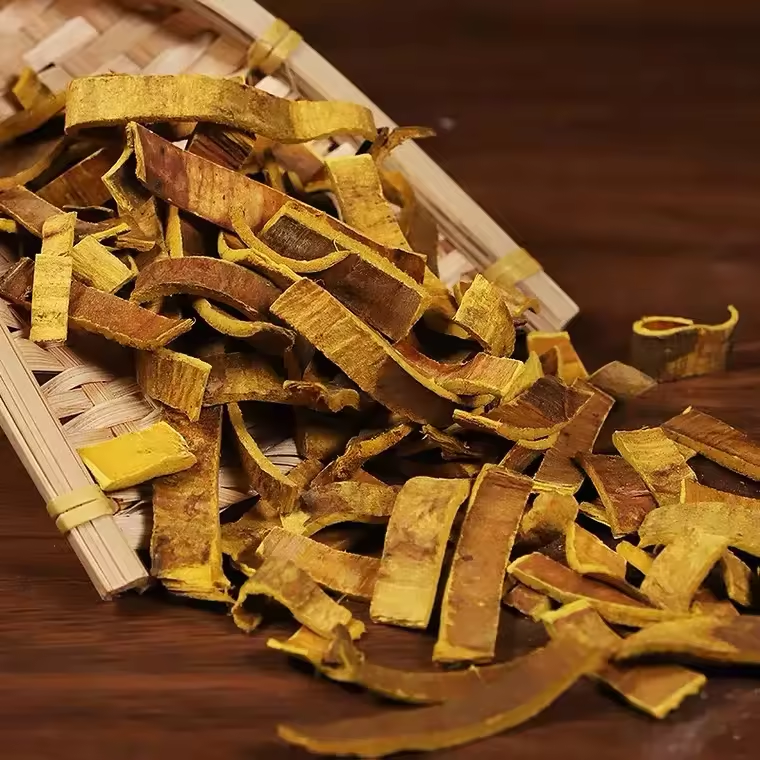



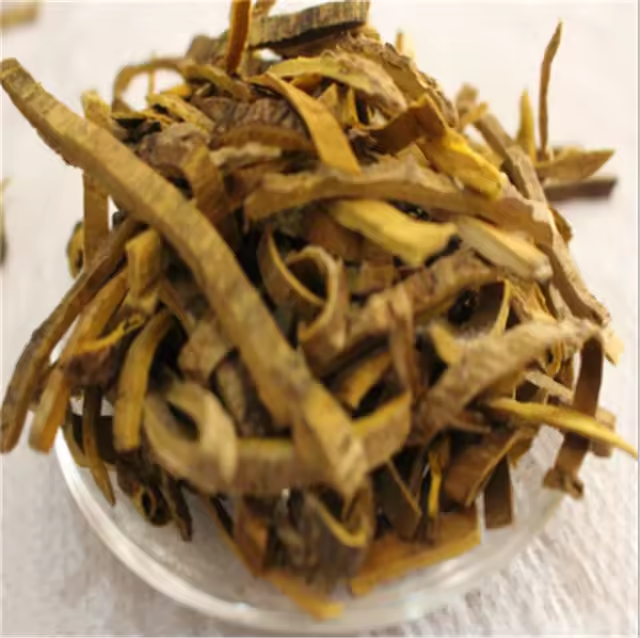




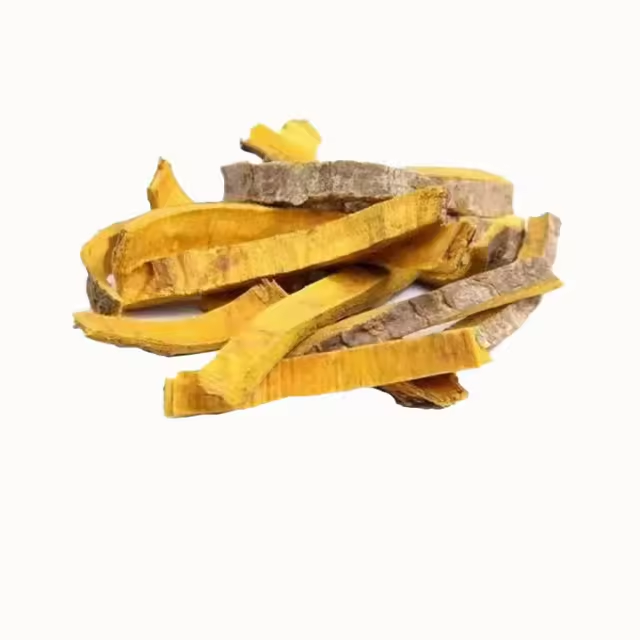

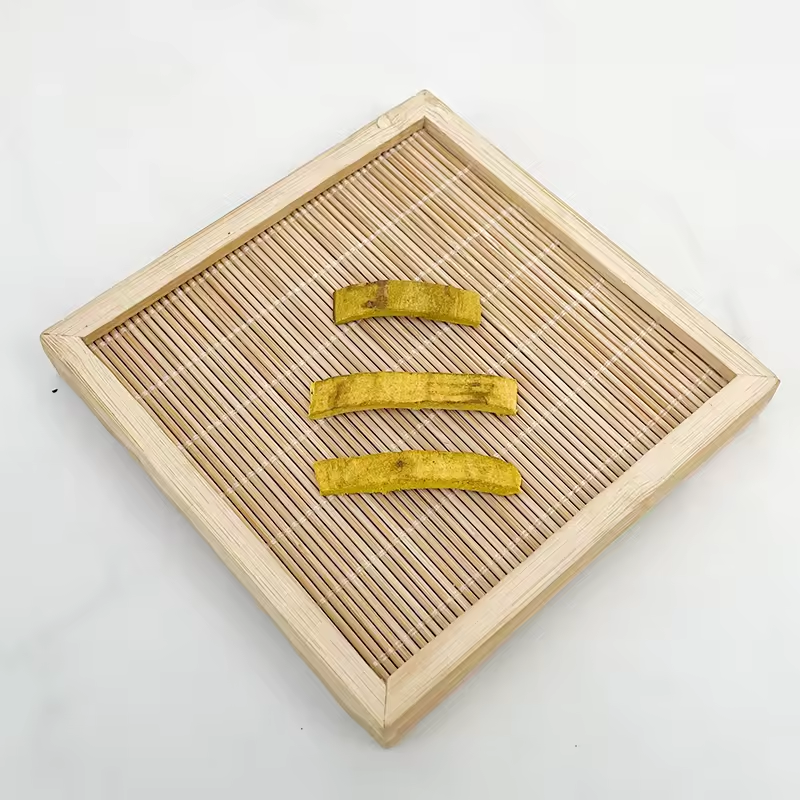

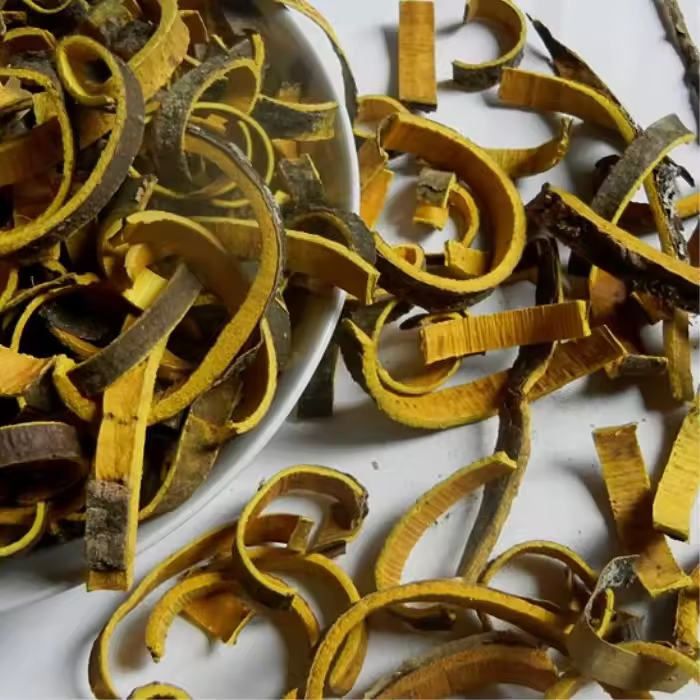

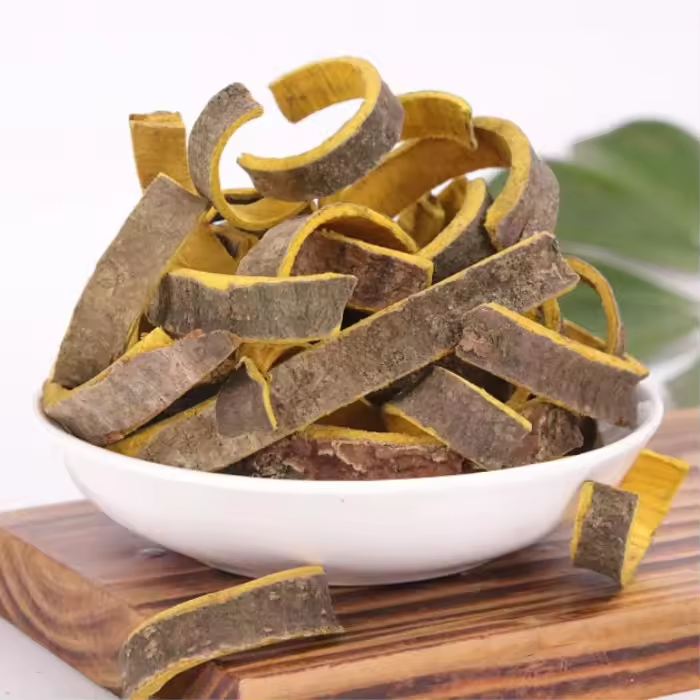


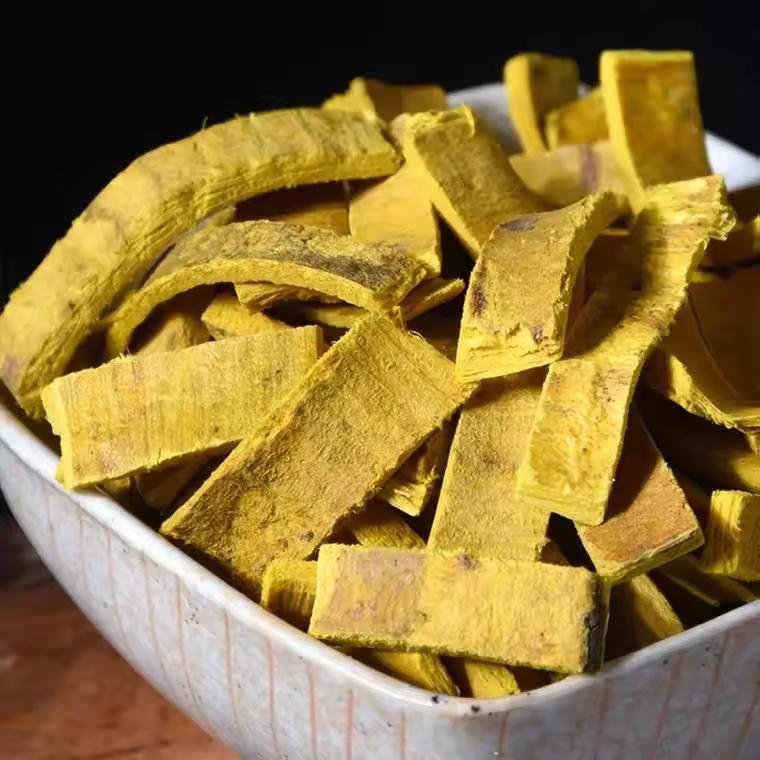

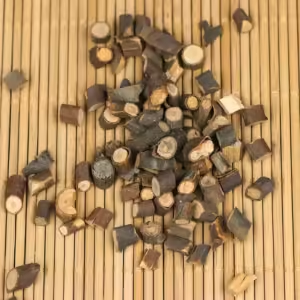
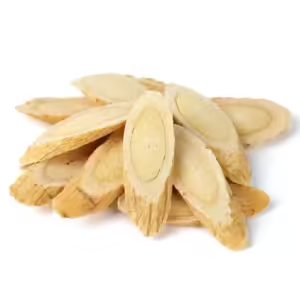
Ulasan
Tiada ulasan lagi.